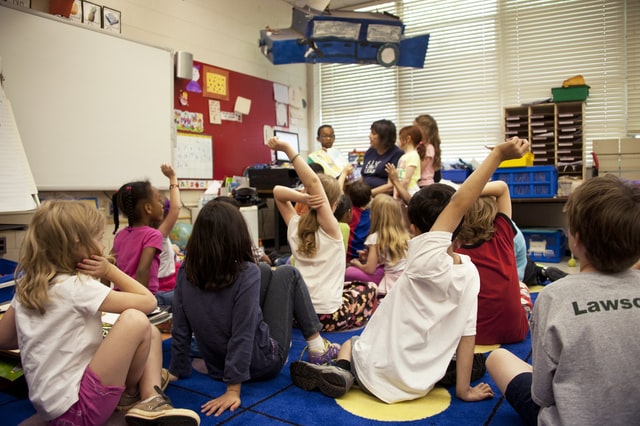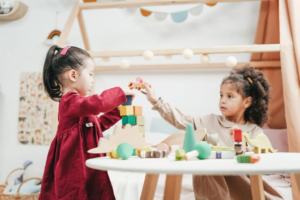
Fun is a complex concept to grasp. There are different ideas about what is enjoyable, and what young students do. When attempting to bring enjoyment into the classroom, carefully select a range of activities to ensure that everyone has fun while learning.
While education is a serious business, children want to have a good time. So, without further ado, here are some entertaining, fun activities in class.
1. Blindfold conversation
This is a new classroom team-building project. The first teacher asks everyone to say a few sentences about themselves.
After that, separate the class into two groups. When a student from a team is called up, their eyes are bound. After that, a student from the opposing team is summoned and asked to speak.
The blindfolded learner must recognize themselves based on their voice. If they fail to do so, they may ask specific questions about what was stated in the introduction to identify the person.
2. Blind artist
This game is performed in pairs and utilizes the creativity and ability to explain things in a youngster. Four or more players are required. Also, you’ll need sheets of white paper, a pencil, a pen or sketch pens, and drawings or images.
Playing Instructions:
- Put the kids in pairs but don’t make them face each other.
- Give one of the children a drawing or an image.
- While his partner narrates the picture, the second child must replicate it without revealing it.
3. Crossword puzzles
These are always useful for when you finish early, and students enjoy them. You can make and print out the puzzles for your class! It’s also a fantastic approach to assist your children in memorizing essential vocabulary.
4. Bingo
Bingo is a short and easy game that never fails to keep pupils interested in their studies. For this game, you will require whiteboards, a pen, or paper and pencils, as well as a list of terminologies that are specific to the subject, such as numbers, essential vocabulary, scientific formulae, or historical personalities.
How to play:
• On whiteboards, have students design a six by six grid and then choose six words or images from a list to draw/write in their grid.
• Afterward, students must guess the word correctly to cross it off their grid (if present).
• Continue describing terms until one kid finishes their grid and exclaims, “Bingo!” (Award a prize to the first student who gets 3 in a row).
5. Missing cards
This is a brain jogging game for students of any level who want to increase their focus. How to play:
- First, the class is split in half. The teacher has a deck of cards that are split into different stacks.
- A kid from the first squad is called up and shown five cards for ten seconds by the teacher. They then shuffle the card and only show four cards the next time around.
- To find the lost card, the learner must rely on recollection. The team with the correct card recalls wins the game.
6. Ball game
In this game, students throw or catch the ball to each other; they can ask and answer questions. The teacher can toss the ball and conduct a quick assessment. You can offer kids a topic and have them throw the ball at each other while saying related vocabulary to the issue.
Another game involves matching the initial letter of each new word to the last letter of the preceding one. For example, if the first word is “goat,” the second word may be “teeth.”
7. Four corners
The teacher would then choose a student ‘X’ at random and ask them to stand outside the classroom after binding their eyes.
The remaining students would be divided into four groups and asked to stand at the room’s A, B, C, and D corners. Those who remain in that corner will be removed from the game once X yells out an alphabet.
The three remaining groups are divided into four groups and instructed to stand in four corners once again. X will yell an alphabet once more, and the party will leave. This practice is repeated until four pupils remain at each of the four corners, with the luckiest student standing last.
8. Activity Books
Children love activity books. From ISpy to Highlights there are a variety of educational activity books for children. You can find all kinds of subjects from science, math to anatomy for kids. This makes learning entertaining and can give them a fun break from the usual classroom routine.
Conclusion
Having a good time in class means playing endless games. While having fun should not be the primary educational goal of a session, it may surely brighten a long day of studying, enhance motivation to learn, and provide some reprieve from the problems and pressures of learning.


